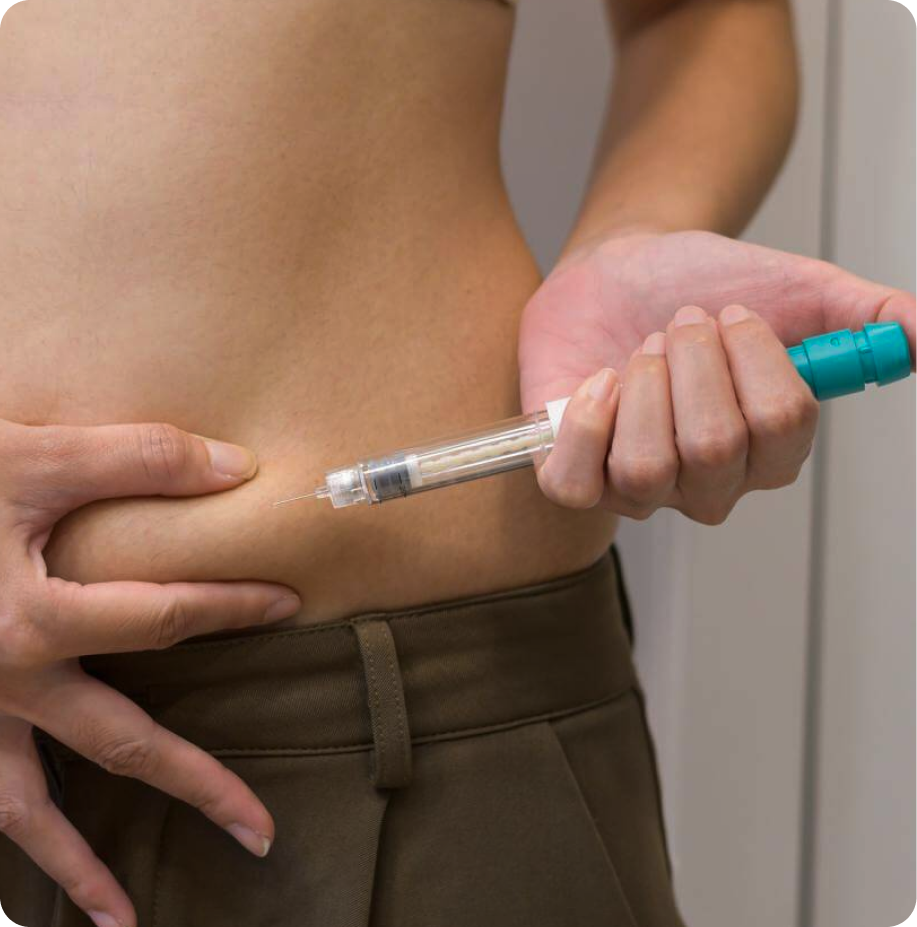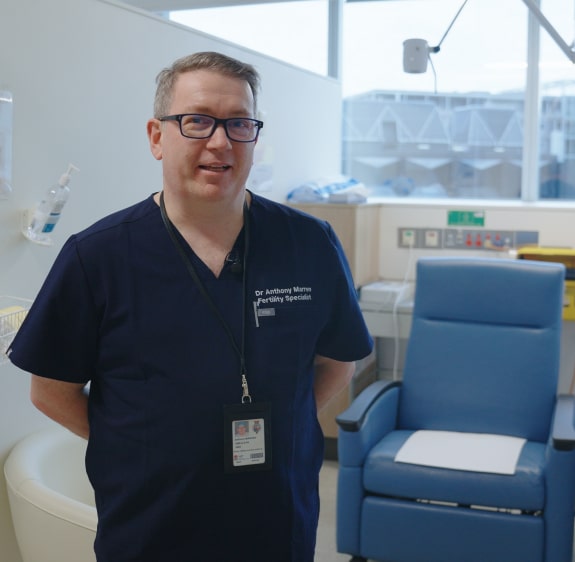
IVF or in vitro fertilisation is an assisted reproductive technology (ART) that combines egg and sperm cells in a lab to create an embryo. If fertilisation occurs, the embryo is carefully transferred into the uterus with the hope that it will implant and develop into a healthy pregnancy.

To start, you’ll take daily injections of Follicle Stimulating Hormone (FSH) to encourage the development of multiple follicles in your ovaries (each follicle may contain an egg). This process typically involves 2–3 rounds of blood tests and ultrasounds to monitor follicle growth and hormone levels.
Once the follicles are big enough to likely hold mature eggs, a "trigger" injection is given to start ovulation. About 36 hours later, the eggs are retrieved during a minor procedure:
This is usually done under a light general anaesthesia, lasting about 20–30 minutes.
At the same time, the male partner provides a sperm sample. In some cases, a minor surgical procedure (e.g., testicular sperm extraction) may be required to collect sperm.
In the lab, embryologists combine the eggs and sperm to encourage fertilisation. If successful, the fertilised eggs are carefully nurtured for the next 5–6 days. Embryo development to day 3 largely reflects egg quality. Embryo development from day 3 to 5, reflects egg and sperm quality.
For those opting for a fresh embryo transfer (as opposed to frozen embryos), embryologists pick the highest-quality embryo. The transfer itself is usually quick and doesn’t need sedation or anaesthesia.
If embryos are frozen, the transfer is scheduled during a later cycle.
After the transfer, progesterone supplements are used to support the luteal phase (the second half of the cycle). A pregnancy test is performed around 11 days after the embryo transfer to determine the outcome.
My decision to partner with Genea for the provision of fertility services, was due to their commitment to research and development. It is through this R&D that they have shown consistently high success rates: https://www.genea.com.au/pages/success-rates-MCHRO6PVH3QNEJZKBQPOTGEWCLNE.
I'm an IVF fertility specialist in Sydney passionate about helping couples conceive and achieve their dream of parenthood. After dedicating my life to the fields of reproductive endocrinology and infertility, I have the experience (and patient care) to assist you on your fertility journey with compassion, understanding and support.
While IVF success rates can vary depending on factors such as age, embryo quality, and underlying health conditions, advances in technology and tailored treatments have significantly improved outcomes.


During your first consultation, I'll take the time to understand your unique situation and fertility goals. We will go through your medical history, any previous fertility treatments, and any concerns you might have.
This is followed by a thorough assessment, which may include blood tests, ultrasounds, and other diagnostic tests to evaluate both partners' reproductive health.
If we decide IVF is the best path forward, I'll create a personalised plan tailored to your needs. This plan outlines each step, the medications involved, and the timeline, ensuring you feel informed and supported throughout the process.
Before starting treatment, it’s important to prepare both physically and emotionally. I’ll offer guidance on healthy lifestyle choices and any necessary medications or supplements to support your reproductive health. This sets a solid foundation for your IVF journey.
The IVF process includes several key steps: stimulating the ovaries, collecting eggs and sperm, fertilisation, nurturing embryos, and transferring the best ones. I’ll guide you through each stage, explaining what to expect and answering any questions you may have.
After the embryo transfer, I’ll keep supporting you through the luteal phase. We’ll schedule follow-ups to monitor your progress and discuss when to take a pregnancy test. Rest assured, I'll be with you at every step.
Depends on a number of factors such as:
For further information on IVF success rates: https://www.genea.com.au/pages/success-rates-MCHRO6PVH3QNEJZKBQPOTGEWCLNE
IVF is a process by which medication is taken to stimulate multiple egg-containing follicles in the ovaries. These eggs are then collected via a procedure. The embryologist then fertilise the eggs with sperm outside of the body and culture the embryos within the lab for 5-6 days. Typically, the best quality embryo is transferred back into the uterus on day 5. Any remaining embryos are either frozen or tested and frozen.
IVF has many indications. The most common are:
Dr Anthony Marren partners with Genea Fertility. Patient Relationship Coordinators (PRCs) will provide a quote based on the treatment plan plus Medicare/ insurance status.
For further information on costs of fertility treatment in Sydney: https://www.genea.com.au/treatment-costs.
Those treatments that hopefully result in a successful pregnancy (e.g. ovulation tracking, ovulation induction (OI), intrauterine insemination (IUI), and in vitro fertilisation (IVF) will typically take 1-month.
Egg freezing cycles typically will take 2-weeks.
Cycles that require chromosome/ genetic testing of embryos and then their subsequent transfer will take approximately 2-months.
The risks of IVF can be divided into ‘maternal risks’ and ‘fetal risks’. Maternal risks can be further subdivided into short-term risks (or risks associated with the IVF cycle itself) and long-term risks (or potential, future risks).
Understanding the emotional journey couples endure when they have difficulty conceiving or recurrent pregnancy loss is essential to my approach.
Creative Advertising by Kiin Agency.